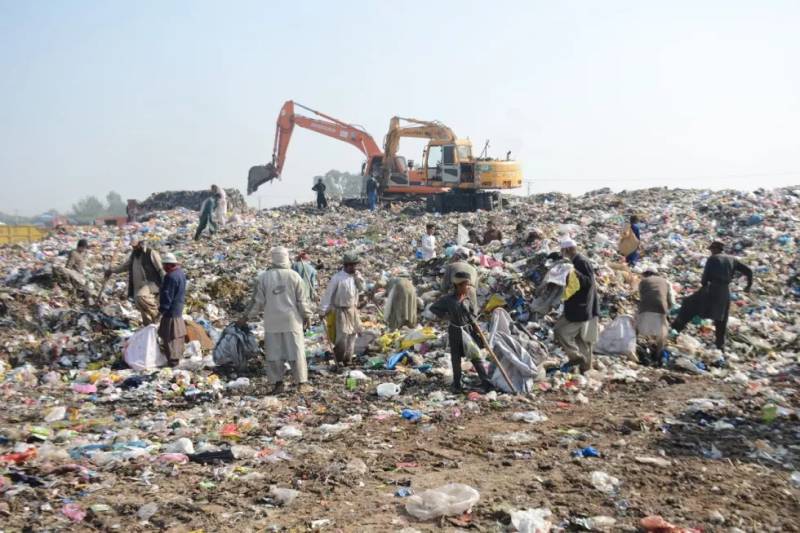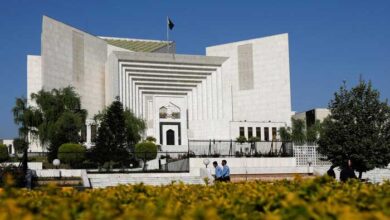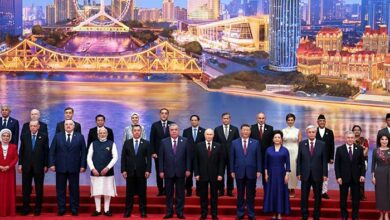Pakistan’s economy is in a transitional phase towards sustainability, which requires aligning core civic services, such as solid waste management (SWM), with national economic goals. The government of Pakistan, through its provinces (under the 18th Amendment), has allocated a budget of PKR 221 billion for SWM, which is approximately 1.26% of the total national budget (PKR 17,573 billion) for FY 2025-26. The major junk of the SWM budget is allocated to Punjab at 67% with national population share of 53%, followed by Sindh at 19% with population share of 23%, Khyber Pakhtunkhwa (KPK) at 8% with population share of 17%, Baluchistan at 4% with population share of 6%, and SWM budget for Islamabad and Azad Jammu & Kashmir (AJK) at 2% of the total sectoral budget. Total solid waste generation in Pakistan is approximately 49.6 million tons per year, and the government spends an annual PKR 915 per capita on waste collection, transportation, and disposal.
The provinces under the 18th Amendment, through the local governments, have the liberty to design, execute, and fund the SWM system based on provincial priorities. Punjab has adopted the decentralized divisional waste management companies (WMCs) model with local outsourcing of waste collection and disposal functions at the tehsil level throughout the province under the Suthera Punjab Program (SPP) except for Lahore and Rawalpindi districts. Sindh has adopted a centralized system through the Sindh Solid Waste Management Board (SSWMB) with a focus on outsourcing of waste collection and disposal. KPK has also adopted a decentralized system by establishing seven water and sanitation services companies (WSSCs) at divisional headquarters on an insourced model for urban waste management. Balochistan has outsourced the SWM system at Quetta through the Safa Quetta project by engaging the Balochistan Public Private Partnership (PPP) Authority. AJK has procured new machinery for Muzaffarabad on an insourced model; Islamabad is in the process of outsourcing the SWM services by adopting the integrated waste handling approach.
All the provincial governments are struggling with manual sweeping, waste collection, transportation, and its disposal. SWM is considered a liability rather than exploring the waste as a resource opportunity. The share of GHG emissions from the waste sector is 6% (32 Mt of CO2-eq) of the country’s all sectors total emissions (585 Mt of CO2-eq) due to the absence of any waste diversion strategy for waste treatment and landfill gas capturing. The recent devastating increase in military spending by the neighboring countries, as reported by Stockholm International Peace Research Institute (SIPRI), is responsible for exacerbating the climate crisis and further prompting Pakistan to adopt a power-balancing approach in tackling the potential conflicts in the nuclear flashpoint subcontinent. Pakistan is ranked 5th on the global climate risk index, as evident from recent flooding. The climatic vulnerability and negative impacts on the local ecosystem can be mitigated by promoting the concept of climate-resilient infrastructure development. The sector has reported some fragmented examples of climate resilient infrastructure at formal level, i.e., compost plants at Lahore and Quetta, refuse derived fuel (RDF) plant at Lahore, material recovery facility (MRF) at Sahiwal, plastic waste recycling plant at Hyderabad, rehabilitation of mehmood booti dumpsite in Lahore, and animal dung to biogas production at Rukh Chandrai in Lahore.
Waste management is a technical subject and advanced, and various similar developing economies have designed sustainable frameworks with a targeted approach towards waste diversion from landfills based on the physical and chemical composition. These sectoral frameworks can be adopted in Pakistan by following recognition-driven policy pathways. For compost manufacturing from kitchen waste and recovery of high-calorific-value recyclables for the production of refuse-derived fuel (RDF), it is proposed to follow an “interest-driven” policy diffusion pathway. The compost for agricultural purposes will support in lowering the carbon footprint with an increase in agriculture-related exports of Pakistan in the European market under the European Commission – Carbon Border Adjustment Mechanism (CBAM). Pakistan is also committed to banning the import of coal as an energy fuel for cement and other power industries under the Nationally Determined Contributions (NDCs) by 2030. Hence, the local waste sector has the potential to support the power industries to meet fuel needs by providing alternative/ cofiring fuel in the form of RDF. Therefore, “interest cum recognition driven” pathways under the policy diffusion approach can support in designing an effective sectoral policy. These pathways will act as a platform for better interaction and collaboration between various actors across the government, political, and private entities for the economic transformation of Pakistan, aligning with climate-oriented business, with an opportunity for international climate finance funding.
The SWM treatment and disposal framework can be developed by analyzing the potential of the waste sector to integrate with principles of the circular economy (CE) under Michael Porter’s five forces framework concept. This approach has helped highlight the strengths and weaknesses to take informed decisions during the policy formation lifecycle. By assessing various waste treatment options such as compost, recycling, anaerobic digestion (AD), mechanical biological treatment (MBT), refuse derived fuel (RDF), incineration, and landfilling with gas recovery, and their related technology competition in the market. Force-1: Supports in evaluating the factors like threats and opportunities of new waste products such as “organic compost” in combination with chemical fertilizer, “biogas” as an alternative to diesel for waste collection vehicles, the “RDF” as a substitute/ cofiring with coal in cement and power sectors. Force-2: Demands for the waste product at the buyer’s end shape the product market trend. Force-3: The ownership and supply of waste (as raw material) support to sustain the sector. Force-4: Waste as alternative fuel and fertilizer modes help to meet the energy and fertilizer demand in the market. Force-5: Intensity of competition or uncertainty supports innovation and incentive schemes. These Five Forces directly impact the waste business dynamics and also help to align the roles and powers of stakeholders towards the waste sector’s sustainability and circularity. Future challenges for possible competition and uncertainty for the waste sector business, such as the current reliance of the informal recycling industry on recyclables recovery through scavengers and junkshops, farmers’ reliance on chemical fertilizers, cement, and other power industries’ reliance on coal as fuel. To overcome these challenges, it is required to integrate the informal waste sector, promote source segregation at the household level (initially a two-bin system), community engagement, and political ownership for the new initiatives are the policy paths that can influence decision-making.
Short, medium, and long-term policy actions with implementation timelines will support sustaining and aligning the waste sector with CE. There is also a need to implement high-impact actions such as targeted source segregations with the provision of a two-bin system, operationalization of compost/ RDF facilities in Quetta, Lahore & Sahiwal, and integration of the informal waste sector at the Junkshop level. Institutional strengthening can be ensured by engaging local NGOs and academia to support people’s behavior change towards source segregation by focusing on critical paths. Further, needs to map the potential revenue streams with financial estimates, which include the sale of recyclables, compost, and biogas with GHG emissions reduction monetary value, recovery of registration fee from junkshops, cost contribution for service charges at household level and role of chamber of commerce for Producer Responsibility Organization (PRO) in promoting concept of extended producer responsibility (EPR) and product stewardship. The engagement of public representatives for political ownership is a critical path for the success of high-impact actions.
The national sectoral policy can also guide the provinces for the formulation of monitoring, evaluation and data reporting framework by defining the key performance indicators (KPIs) for physical infrastructure such as dedicated resources for residential, commercial, institutional, and housing societies waste collection streams, waste economics, waste environment, waste social aspects, governance and legislative, stakeholder engagement, community awareness towards behavior change, and political will. Monitoring can be strengthened by the introduction of smart tools for evaluation and enforcement such as Internet of Things (IoT) and machine learning (ML) in hotspot identification, workers’ attendance, fleet repair, fuel issuance, and route optimization. These smart monitoring frameworks can be integrated with safe city cameras to minimize the investment cost, and emissions from the dumpsites can be monitored through drone cameras with hyperspectral sensors or satellite images having “hyperspectral imagery sensors” with the support of “Pakistan Space & Upper Atmosphere Research Commission (SUPARCO)”. The application of LiDAR sensors and hyperspectral cameras in “drone technology” is an urgent need of the era to monitor sectoral emissions. This approach can support in converting the physical environmental problem into a digital dataset for monitoring, and informed decision-making to have better, quicker solutions.
The policy review options (mid-term review) will support assessing progress against the defined KPIs/ implementation plan and timelines. Any delays in achieving the strategic goals can be examined with respect to financial, technical, and human resource constraints. Based on findings, the implementation timelines may be updated with proposed targeted interventions to overcome the challenges. This interim policy review strategy will also help to assess the gaps, such as weak enforcement, low rates of source segregation/ behavior change, community engagement, and insufficient infrastructure that may impact the implementation targets. Based on the assessment, adjustments in policy timelines can be proposed, including revised targets, strengthened community engagement efforts, and policy or regulatory reforms aligned with the mandate of the Ministry of Climate Change and Environmental Coordination (MoCC&EC) at the federal level to ensure compliance with United Nations commitments in meeting the targets of SDGs and NDCs.







